[orc]A Congress MP from Kerala recently raised the issue of Lotus being printed on the Indian passport. Is Lotus the ‘National Flower’? What are the other national symbols in India? Do you know about India’s National Microbe?
M K Raghavan of the Indian National Congress and representing Kozhikode, Kerala in the Lok Sabha has recently raised an issue during zero hour about the printing of Lotus symbol on the Indian Passport. The concern raised was that lotus alludes to the Party Symbol of Bharatiya Janata Party.
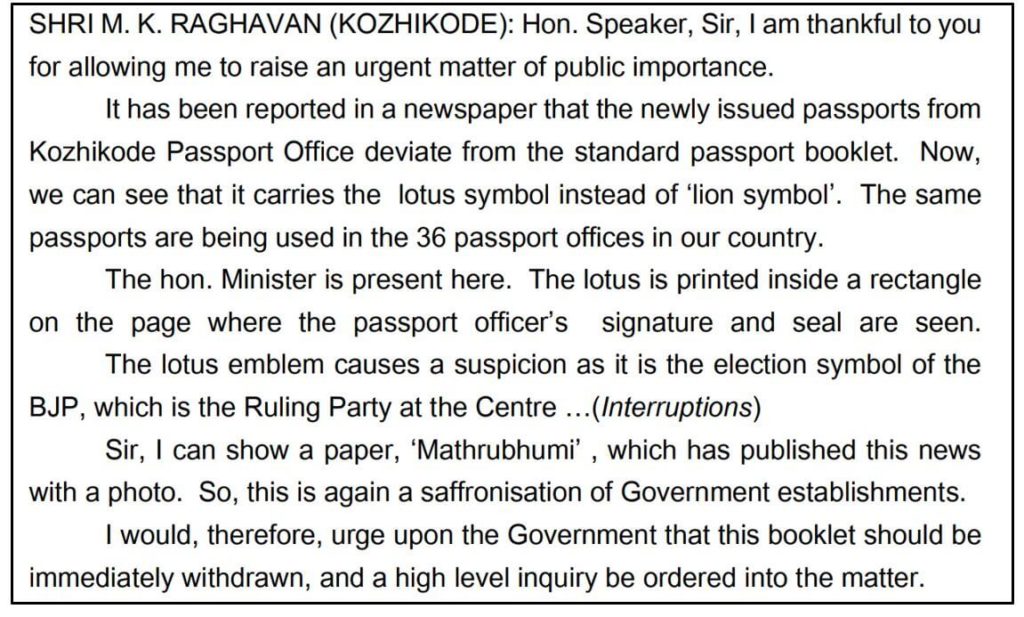
A clarification was issued by Ministry of External Affairs (MEA) after this was raised in the parliament. It was stated that this is part of the enhanced security features being implemented with the passport and other national symbols would also be included going forward on a rotational basis.
However, a debate has ensued about Lotus being the national flower of India. In this story we look at the various official national symbols of India and also explore other symbols which are the considered as national symbols in the larger national conscience.
New national symbols are added time to time for varied purposes
While, there is no concise list of National Symbols, the Government of India has over a period of time declared various national symbols through official notifications & legislations. Few of the National symbols like the National Flag, National Anthem etc were adopted at the time of India adopting the constitution, while few other like Tiger was accorded the status of National Animal to create awareness about them being endangered species.
There are 7 symbols specified as per India’s National Portal i.e. www.knowindia.gov.in which include: National Flag, National Anthem, National Song, State Emblem, National Bird, National Animal and National Flower. There may be others which are accorded National symbol status by government of India.
National Flag
The National Flag of India was adopted by Constituent Assembly of India on 22 July 1947. It is a horizontal Tri-colour flag consisting of :
- Deep Saffron or Kesaria at the top
- White in the middle
- Green at the bottom
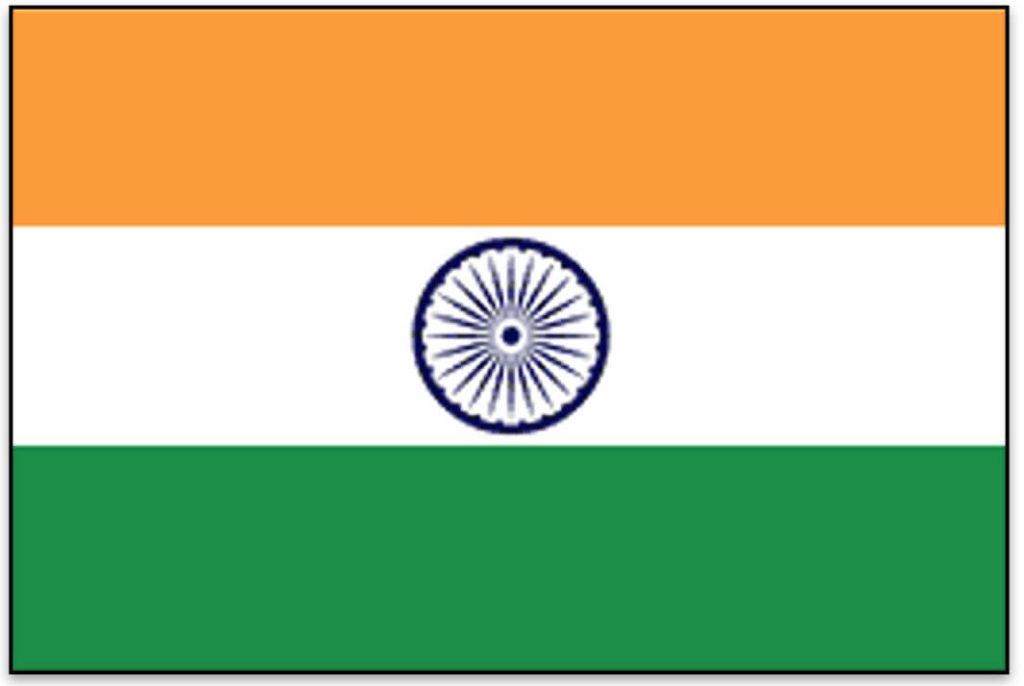
All these three bands are in equal proportions. The centre of the White Band has a Navy-Blue Wheel/ Chakra. The specifications of the Indian Flag are provided in the Flag Code of India – 2002.
The three colours in the Indian Flag signify the following.
- Saffron – Strength , Courage
- White – Peace, Truth
- Green – Fertility, Growth and Auspiciousness of the land
The Wheel at the Centre is called ‘Dharma Chakra’ and has 24 spokes. It is taken from the abacus of Ashoka’s Lion Capital at Sarnath.
The Flag code of 2002 provides the specifications about the make and dimensions of the Indian Flag and also the various rules to be followed while hoisting it.
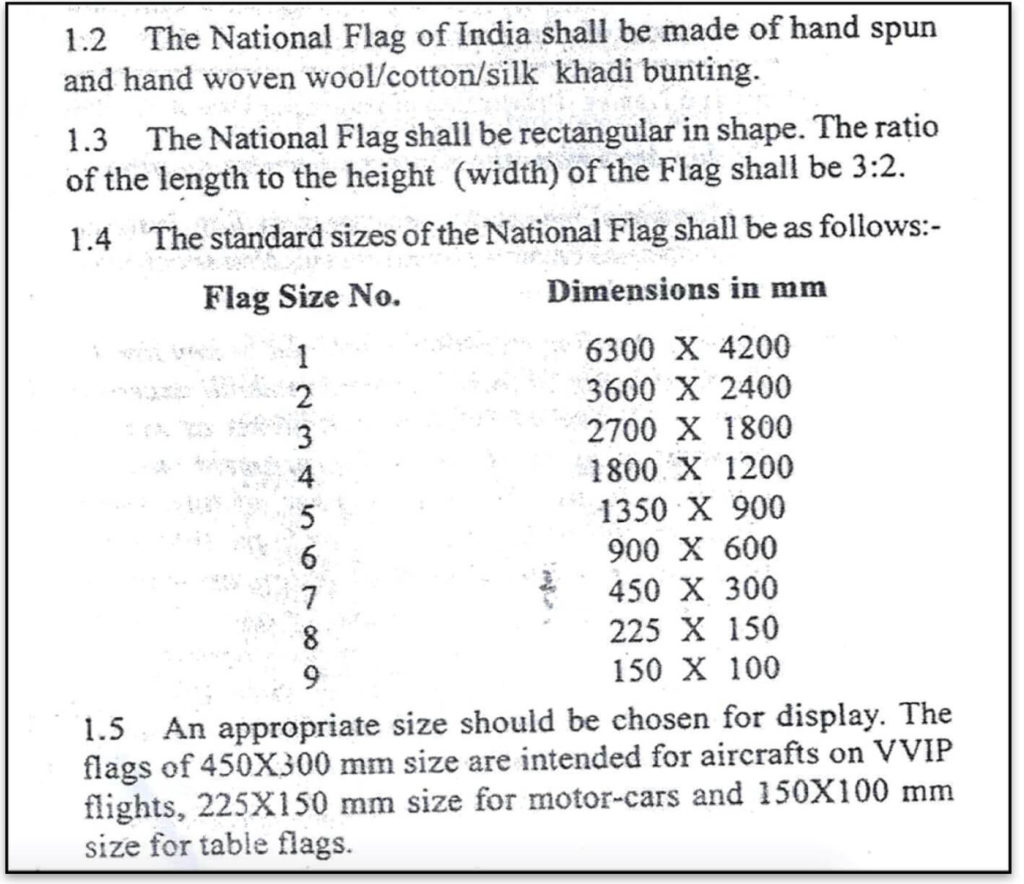
National Anthem
‘Jana Gana Mana’, composed by Rabindranath Tagore is adopted as the National Anthem of India.

It was adopted by Constituent Assembly of India, on 24 January, 1950. It was first publicly sung at Calcutta Session of Indian National Congress in 1911. The runtime of the full version of National Anthem is 52 seconds. There are multiple orders of the Supreme Court about the responsibility of the citizens during recital of National Anthem. Any insult to the national symbols is an offence under ‘The Prevention Of Insults To National Honour Act, 1971’.
National Song
‘Vande Mataram’ is adopted from Bankimchandra Chatterjee’s famous novel Anand Math. It was first sung during 1896 session of India National Congress in Calcutta, by Rabindranath Tagore. The song and the slogan ‘Vande Mataram’ became a key part of Indian Freedom Movement.
The first two verses of the poem penned by Bankimchandra Chatterjee is adopted as the National Song.
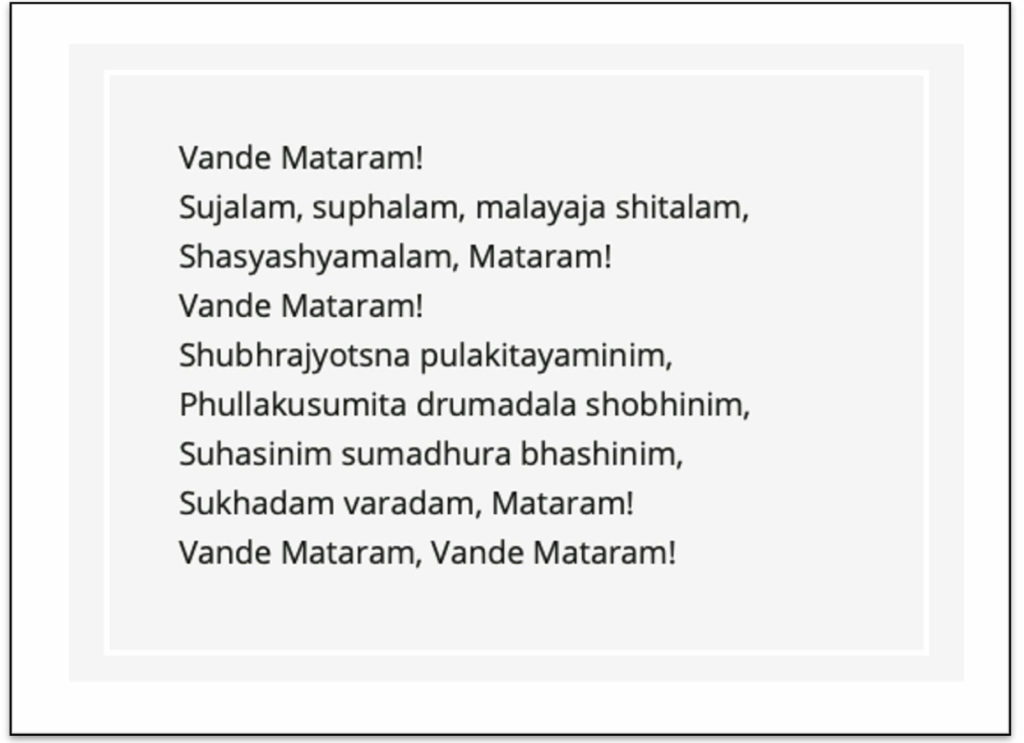
State Emblem
India’s State Emblem is adopted from Sarnath Lion Capital of Ashoka. It was adopted on 26 January 1950 by Government of India. The Lion Capital has four lions , mounted back to back on circular abacus. The abacus rests on a bell shaped lotus and consists sculptures of a horse, bull and a lion. These are separated by Dharma Chakras.
The State Emblem of India is the profile of this Lion Capital. It shows three lions mounted on the abacus, which has a Dharma Chakra at the centre flanked by a bull on right and galloping horse on left. Outlines of the Dharma Chakra are on the extreme right and left. While, the lotus from the Lion Capital is excluded in the Emblem, the motto ‘Satyameva Jayate’ in Devangari script is written below. It is adopted from Mundaka Upanishad and means ‘Truth Alone Triumphs’.
The government of India, from time to time issues regulations regarding the use of National Flag, National Anthem and State Emblem.

National Calendar
While the Gregorian Calendar is followed in India in the daily life, the Government of India also follows Saka Era along with Gregorian Calendar for official purposes including
- Gazette of India
- News Broadcast by All India Radio
- Calendars issues by Government of India
- Government communication addressed to public
This was adopted on 22 March 1957. Every official notification of the government contains reference to the Saka calendar in addition to the date in Gregorian.

National Currency Symbol
The National currency of the country is Indian Rupee and since 15 July, 2010 Government of India has adopted a sign to represent it.

It is an amalgamation of ‘Ra’ in Devanagari Script and Roman Capital Letter ‘R’. It has two parallel horizontal stripes running at top which symbolizes Indian national flag and also ‘Equal to’ sign. It has been designed by Udaya Kumar, from IIT Bombay after his entry was picked up in the open competition held by Ministry of Finance.
Flora & Fauna as National Symbols
Countries assign certain species of Flora and Fauna as their national symbols. In most of the cases these tend to represent and hold an important place in the culture of the country. In few other cases, they are done as part of conservation efforts and to create the awareness about them.
India has also designated certain bird, animal and plant species as national symbols.
National Bird
Peacock, known as the Indian Peafowl is considered to be the National Bird of India since 1963. This is confirmed via a notification issued by Ministry of Environment and Forests.
Furthermore, Peacock is a protected species under Wild Life Protection Act-1972. The scientific name of Peacock i.e. Indian Peafowl is Pavo cristatus.
Sarus Crane, Swan, Great Indian Bustard, Brahminy Kite etc where few of the other birds considered for conferring the honour of National Bird of India. The criteria for choosing the National Bird were :
- Having a National presence i.e. is widely distributed across the country and is easily recognizable by the common man.
- Should have abstract representation on government publications
- Should not be confused with national bird of other countries.
Indian Peafowl, fits the billing on all these criteria. Furthermore, Peacock and its motifs are an important part of the Indian Mythology, history, culture and traditions.
National Animal
Bengal Tiger i.e. Panthera Tigris is the National Animal of India. Responding to a question asked in Rajya Sabha, the Minister of State for Home Affairs stated that as per the notification issued by Ministry of Environment, Tiger is notified as the National Animal.
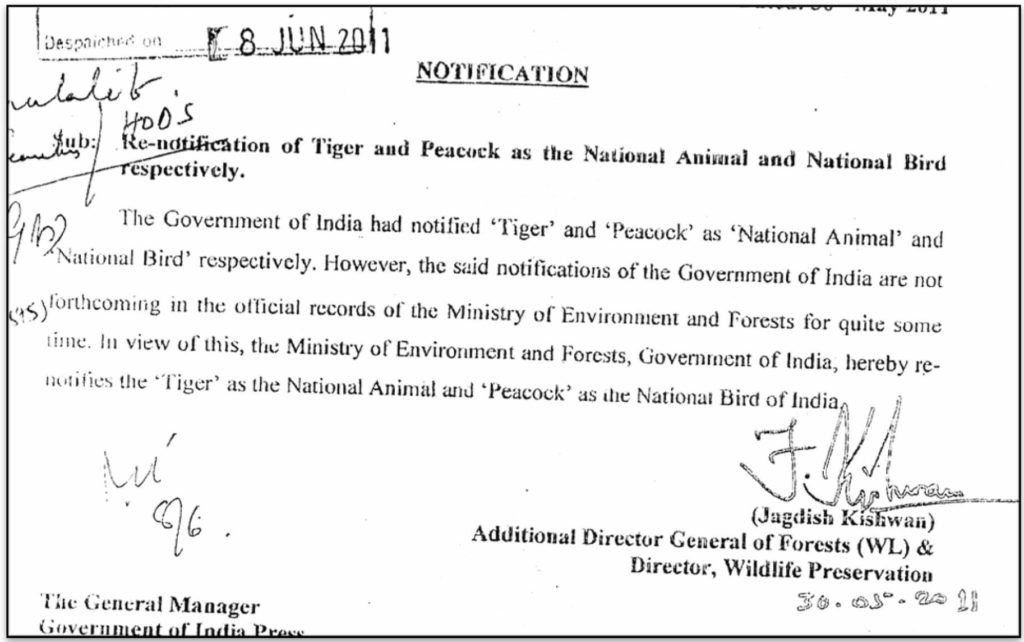
Government of India has initiated Project Tiger in 1973 as a focussed approach towards Tiger conservation. There are currently 18 Tiger reserves in the country. As per Tiger Census reports there are 2,967 tigers in India as of 2018, an increase from 1411 in 2014. Factly has earlier published stories on the number of Tigers and Tiger deaths in India.
National Flower
The information on the Indian Government’s National portal cites Lotus as National Flower of India. Its scientific name is Nelumbo Nicifera Gaertn. It holds an important place in Indian tradition by being part of various rituals as wells as lotus motifs being a prominent part of art and culture.
However, in response to a question asked in Rajya Sabha, on 10 July 2019, Minister of State for Home Affairs said that there is no notification issued by Ministry of Environment, which accords Lotus the status of National Flower of India.
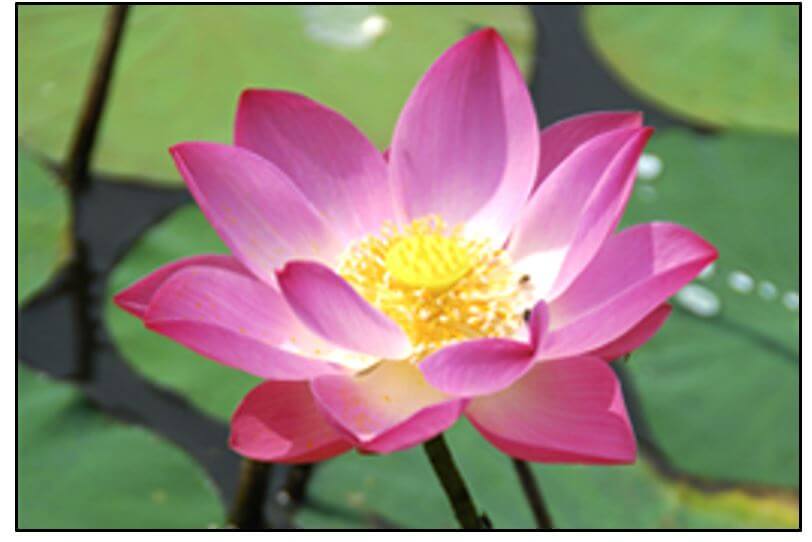
National Tree
Indian Banyan i.e. Ficus Benghalensis also called Indian Fig Tree is National Tree of India as per Government of India’s national portal.
It has been an integral part of India’s tradition and culture. It roots itself and spreads over large areas causing its long life. It has since time immemorial been a crux of the life in India , with its shade being an ideal spot to shield from the sun. The wide spread branches and the trunk form shelter for various flora and fauna. All these aspects represent the idea of India and hence is considered to be the National Tree of India.
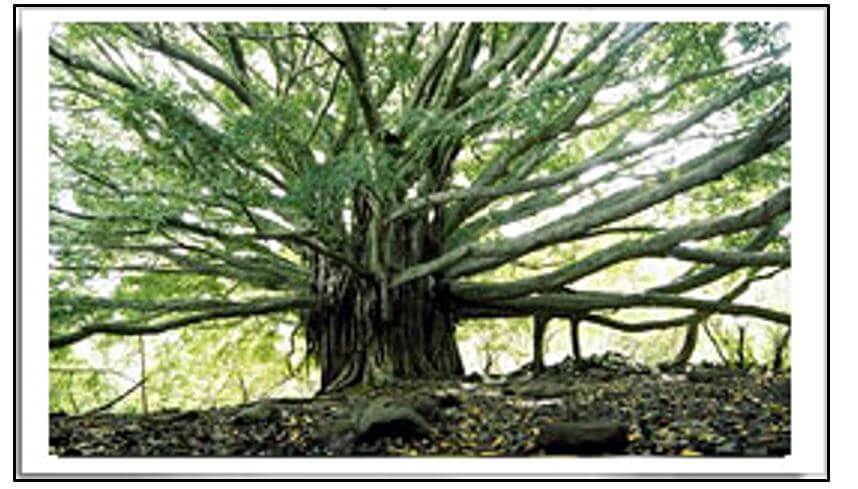
National Fruit
Mango, from the tree Mangifera Indica has been grown in India for ages. It has been accorded the status of National Fruit of India. It is one of the most popular fruits in Tropical Climatic regions and India itself has more than 100 varieties.

National Aquatic Animal.
Ganges River Dolphin is one of the most endangered species. The Government of India has on 18 May 2010, notified Ganges River Dolphin as the National Aquatic Animal of India. The intent is to create awareness in regards to conservation and protection of the species.
It’s scientific name is Platanista Gangetica and is marked by its long pointed snout, visible teeth on both the jaws and very small eyes. They are found in Ganga, Brahmaputra and Meghana rivers. With less than 2000 in number it is recognized as highly endangered under Schedule 1 of Wildlife Protection Act. It is one of the only 4 species of Fresh Water River Dolphins and is threatened by water pollution and poaching.

National Heritage Animal
Government of India’s Environment & Forests Ministry has declared Elephant as National Heritage Animal in the year 2010. Elephants have been an indispensable part of India’s history and also form a key part of Ecology. While many of the initiatives proposed like setting up of National Elephant Conservation Authority are yet to see the light of day, multiple initiatives have been taken since 2012 for conservation of Elephants and to reduce Human-Elephant conflict.
National Microbe for India
Not only from the world that is visible to the naked eye, India also has a symbol from the microscopic world. Lactobacillus ( Lactobacillus delbrueckii subsp. Bulgaricus) is declared s the National Microbe for India October 2013.
The selection process was through a voting by children who visited Science Express Biodiversity Special Train that visited various stations across the country. This is the main bacteria that is used to make yogurt and curds and hence a part of Indian culture and lifestyle.
National River of India
Ganga, or the Ganges is accorded the status of National River of India. Apart from being considered as the holiest river as per Indian tradition, it is also the largest river that flows in India. Its basin is the largest populated river basin in the world.
Ganga has been since the ancient times, and integral part of Indian culture. However, over the years, Ganga has been heavily affected by Pollution. The National Mission for Clean Ganga has been established to clean the river. The survival of one of the national symbols i.e. Ganga River Dolphin depends on reduction of pollution in Ganga.
Falsely accorded national symbols
Apart from these symbols, there are claims about India Cobra being National Reptile, Pumpkin being National Vegetable and other claims around National insect etc. but these do not find a mention in the official records.
Hockey as the national sport is one of the other myths around National symbols. However, Government has not designated any sport as the national sport. Along with Cricket, Hockey is one of the most popular sport and India was very successful in International Hockey in the yester years.
Another popular myth in common Indian parlance is Hindi being the national language. There is no national language in India. Hindi, however, is the official language along with English for official purpose. Factly’s story on this issue can be read here.


